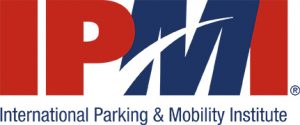 By Perry Eggleston, CAPP, DPA
By Perry Eggleston, CAPP, DPA
Rahm Emanuel said, “You never let a serious crisis go to waste. And what I mean by that it’s an opportunity to do things you think you could not do before.”
I started as executive director of UC Davis Transportation Services on January 2, 2020, and while I was still learning my way around the campus, the COVID crisis struck. The industry suddenly faced unprecedented difficulties that challenged the most senior mobility experts.
March 16 came and suddenly, there were discussions of campus closures, distance learning, and teleworking. Until that time, telework was a wish for many in the transportation industry but not considered plausible due to supervisor and management reluctance. Within a week, these discussions made campus-wide telework a reality. When this COVID thing lasted longer than a few weeks, the campus started to look at how we could use the lull to continue the momentum of flexible work arrangements (FWA–the term our campus now uses for telework and compressed work schedules), and our department pushed the campus to continue planning using them past the pandemic.
To address all the issues for making FWA an ongoing TDM strategy, I am co-chairing a university committee: “Reimagining the Workplace.” Stakeholders from human resources, technology, planning, safety and ergonomics, employee/union relations, communications, legal, and finance are all involved. The committee has already identified several advantages to FWA: recruiting the best talent, employee well-being, more campus space for students, and reducing traffic congestion and air pollution. However, there are challenges to be overcome to arrive at the advantages.
Join Ramon Zavala and me April 21 when we host the IPMI webinar, Teleworking: An Alternate Mobility Mode. We will look at what institutions should consider when creating their own FWA program and planning lessons learned.
Perry Eggleston, CAPP, DPA, is executive director, transportation services, at UC Davis. He and Ramon Zavala, the university’s transportation demand manager, will present on this topic during an IPMI webinar, April 21. Click here for details and to register.

 By L. Dennis Burns, CAPP
By L. Dennis Burns, CAPP By Brett Wood, CAPP, PE
By Brett Wood, CAPP, PE
